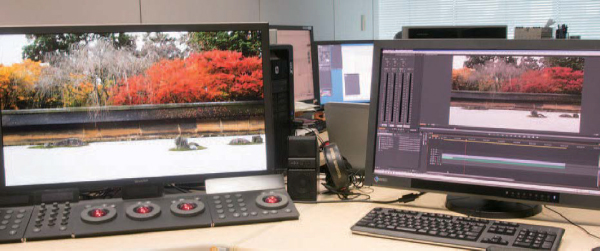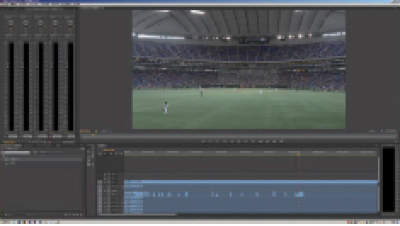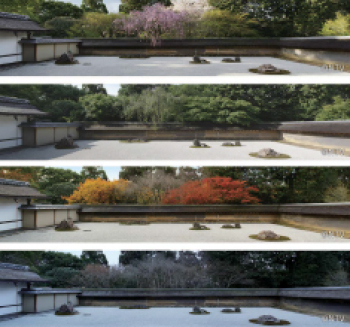Nippon Television Network prepares for 4K
09 January, 2015
Japanese broadcaster implements a cost-effective solution based on Adobe Creative Cloud to create a dynamic and efficient workflow for 4K broadcasts.

When deciding between teams or enterprise licensing, the technical operations department chose to work with Creative Cloud for enterprise. “For security reasons, our work computers are not connected to the Internet so the enterprise license was a better fit for us,” says Ayato Fujii, CG designer for the technical operations department, engineering & technology division. “Adobe Creative Cloud for enterprise includes all of the design tools we need: Photoshop CC, Illustrator CC, and After Effects CC.”
“We have always used Adobe creative software, and now Adobe Creative Cloud for enterprise offers us a costeffective way to provide everyone with the applications they need,” adds Toru Fujihara, associate managing director of the technical operations department, engineering & technology division. Yasuo Tsutsumi, CG designer in the graphic design department at the Nippon Television Art Media Design Center adds, “With Adobe Creative Cloud, we can install a full range of creative software onto all of our designers’ computers, which has everyone very excited.”
 Developing high-quality 4K content
Developing high-quality 4K content
The technical operations department deployed Creative Cloud for enterprise on the workstations of all designers. The Creative Cloud implementation provided an opportunity to also switch from EDIUS editing systems to Adobe Premiere Pro CC to reduce costs, add integration with After Effects, and support the Grass Valley HQ/HQX codecs.

“We do a great deal of CG work for our TV broadcasts,” says Fujii. “By using the Grass Valley HQ codec with Adobe Premiere Pro CC, we can attach 4K monitors to our work computers to create true 4K machines that leverage Adobe’s support for cutting-edge hardware and standards.”
Designing a new environment
One of the first 4K programs Fujihara worked to develop for Nippon TV using Creative Cloud was a video art exhibit across three 4k screens recreating the famous stone garden at Ryoanji Temple in Kyoto. This video was displayed in the “Kyoto from Inside and Outside: Scenes on Panels and Folding Screens” special exhibit at Tokyo National Museum. Nippon TV designers used Adobe Premiere Pro CC, After Effects CC, and Photoshop CC to pull the footage together and give visitors a taste of Ryoanji Temple across four seasons.
Shooting at Ryoanji Temple started one year before the exhibition. At the time, Nippon TV did not have an environment that could view 4K footage so the team decided to implement a turnkey system that supported 4K in native resolution. One of the deciding factors for the system was that it also needed to support 60 frames per second.
 “We produced the Ryoanji Temple footage in 30p, so there was no need for 60p support for that project,” says Fujihara. “However, we knew that we would need 60p support for future broadcasts that may involve fast motion, such as sports programming. By deploying Creative Cloud on Windows workstations loaded with Epoch 4K Supernova cards from BlueFish, we achieved a system similar to turnkey systems.”
“We produced the Ryoanji Temple footage in 30p, so there was no need for 60p support for that project,” says Fujihara. “However, we knew that we would need 60p support for future broadcasts that may involve fast motion, such as sports programming. By deploying Creative Cloud on Windows workstations loaded with Epoch 4K Supernova cards from BlueFish, we achieved a system similar to turnkey systems.”
Pitching live baseball broadcasts
Another project driven by Nippon TV was a broadcast of the October 2013 professional baseball match between the Yomiuri Giants and the Yakult Swallows in Tokyo Dome recorded using four 4K cameras and one high-speed camera. Unlike other types of content, baseball broadcasts fill a very long slot in the schedule.
First, Nippon TV shot the action in Tokyo Dome using five cameras, four of which recorded in SR-Lite mode on Sony’s Simple Studio Profile (SStP) codec. Next, the team edited the 4K footage on the Adobe Premiere Pro CC timeline and exported the final program in XAVC format. “When we started on our programs, Adobe Premiere Pro CC was one of the only applications that could output in XAVC format,” says Fujihara. “We knew we wanted to use XAVC output from the start, but being able to use Premiere Pro CC through final delivery really helped our workflow. We could not have produced the two 4K videos without Adobe Premiere Pro CC.”
Fujii concludes, “From a creator’s point of view, it’s a chance we couldn’t pass up. We’re glad to have Adobe Creative Cloud for enterprise to help us continue to push the creativity limits of our production broadcasts.”


